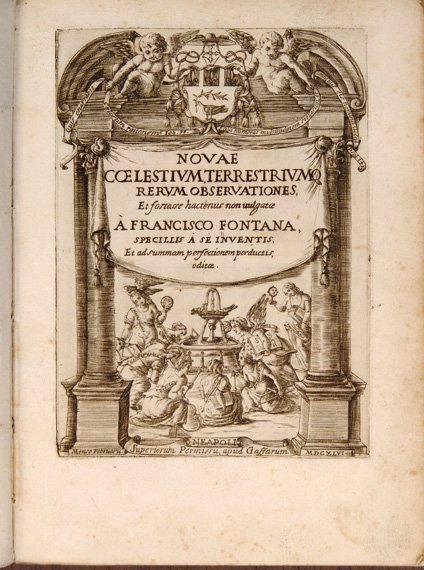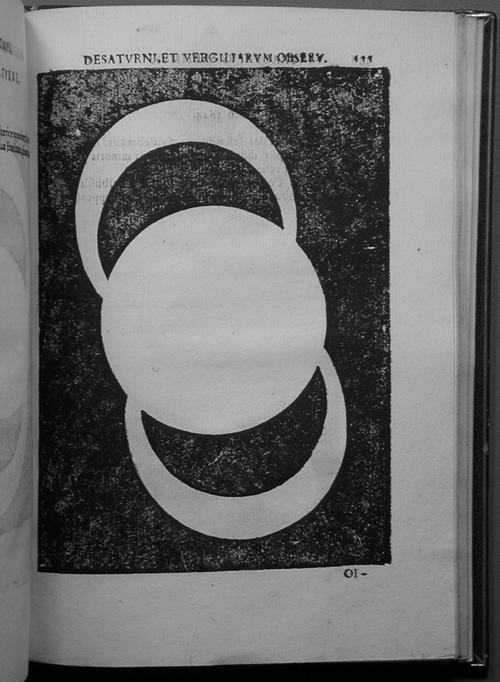Novae Coelestium, Terrestrium Rerum Observationes
Venus is the brightest object in the night
skies (except for the Sun and Moon) and has attracted the interest of
astronomers for centuries. Astronomers
tried to use surface markings on Venus to calculate the length of a Venusian
day. In 1646 Francesco Fontana in his
work Novae coelestium, terrestrium rerum observationes (The new heavens as
observed from earth) mistakenly claimed he observed a day on Venus lasts 23
hours 41 minutes. (Venus actually makes
one complete rotation only once every 243 Earth days!).
When the planet's night side faces the earth (inferior conjunction) Venus resembles a crescent, which Fontana observed through his telescope and presented in this illustration.




